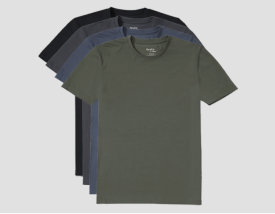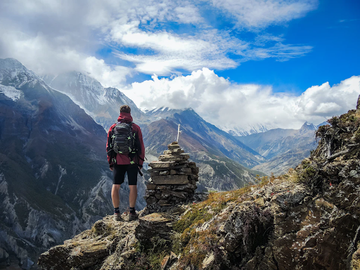Sweating is one of those things everyone does, but nobody really wants to deal with. It’s your body’s built-in cooling system, working hard to keep your temperature in check. Useful, yes. Stylish, not so much. The result is usually damp fabric, pit stains, back sweat, and odors that stick around longer than you’d like.
And it shows up in more places than you think. A tough workout, a packed train in the middle of summer, a big client presentation, or even just nerves before a date can all turn into prime times for sweat to make an appearance.
That’s why moisture wicking shirts exist. Think of them as your quiet defense system. A sweat proof undershirt or sweat blocking shirt pulls moisture away from your skin, dries quickly, and keeps you looking sharp. They are not just gym gear. They are everyday tools for comfort and confidence.
So, who should wear them? The real answer is simple: almost everyone can benefit from shirts that hide sweat.
How Do Moisture Wicking Shirts Work
Imagine your shirt acting like a smart straw for sweat. The fibers pull moisture away from your skin thanks to something called capillary action and spread it thin so it evaporates fast. That’s why a sweat proof undershirt feels dry even during high-pressure moments, while a cotton tee clings.
Some high-tech fabrics even mix “moisture magnets” (hydrophilic fibers) with “sweat pushers” (hydrophobic fibers). The result is a stay dry all day shirt that looks sharp and feels even sharper.
Cotton vs. Tech: Why Old-School Shirts Fall Short
Cotton is cozy for pajamas, but terrible for sweat control. It soaks up moisture, traps odor, and leaves you with pit stains that show up before you even notice them. That’s why switching to sweat blocking shirts or a moisture wicking undershirt is such a game-changer. You get:
● Pit stain proof confidence
● Temperature regulation (cooler in summer, warmer in winter)
● Odor control that keeps you fresh
● Lightweight comfort you’ll forget you’re wearing
● Quick-dry convenience for travel and busy days
Basically, it’s the upgrade your wardrobe didn’t know it needed.
Who Benefits from Sweat Resistant Clothing?
Short answer: anyone with sweat glands. But let’s get specific:
Athletes and gym-goers: The best shirts for sweating keep you moving, not dripping.
Office professionals: An office undershirt for men or performance dress shirt keeps meetings stress-free.
Wedding warriors: Grooms need a clean and polished look at weddings. Moisture wicking undershirts under suits will not betray them on the dance floor.
Anxious sweaters: A shirt for anxious sweating or a black v-neck sweat proof undershirt is your invisible safety net.
Hyperhidrosis fighters: A sweat proof undershirt provides real relief for those dealing with hyperhidrosis without medication.
Travelers: Quick-drying, odor-resistant, and light to pack.
Summer survivalists: A summer undershirt for men or back sweat undershirt keeps you cool and dry.
The truth is, sweat resistant clothing works anywhere life puts pressure on you. Whether you are chasing a personal record at the gym, presenting to clients, dancing all night at a wedding, or just trying to stay fresh during a long day of travel, sweat blocking shirts give you comfort and confidence in every situation.
Sweat Proof Style for Every Occasion
Sweat control isn’t just for workouts anymore. You can find:
● No sweat dress shirts for big presentations.
● Moisture control clothing that transitions from gym to office.
● Sweat proof business attire for networking events and interviews.
● Sweat proof shirt bundles and intro undershirt packs so you can test-drive the dry life without breaking the bank.
From athleisure to boardroom-ready, there’s a sweat-proof option for every style.
Taking Care of Your Sweat Proof Shirts
Keep your sweat resistant clothing in top shape with a little TLC:
● Wash cold, inside out
● Avoid fabric softeners (they clog the magic fibers)
● Air dry or tumble low
● Skip the iron, these fabrics are designed to bounce back on their own
Frequently Asked Questions
Are sweat proof shirts the same as moisture wicking shirts?
Not always. Moisture wicking shirts manage sweat by moving it away from your skin so it dries fast. Sweat proof shirts or sweat blocking shirts usually have extra layers or technology built in to stop sweat from showing through. Many modern options combine both features for maximum comfort and confidence.
What makes a moisture wicking undershirt better than cotton?
Cotton absorbs and holds sweat, which leaves you damp, heavy, and sometimes smelly. A moisture wicking undershirt pulls moisture away and dries quickly, which means you stay cooler and fresher throughout the day.
Do sweat proof shirts help with hyperhidrosis?
Yes. While they are not a cure, an undershirt or sweat resistant clothing can make daily life much easier by blocking visible sweat and keeping you comfortable without medication.
Are sweat proof shirts only for hot weather?
Not at all. They help regulate temperature in both hot and cold conditions. In summer, they keep you cool by speeding up evaporation. In winter, they prevent sweat from staying on your skin and making you cold.
Bottom Line
Moisture wicking shirts aren’t just about looking good. They’re about freedom. Freedom to raise your arms in a boardroom. Freedom to dance at weddings without secretly fanning your back. Freedom to stay confident when life (or your nervous system) turns up the heat.
So, who should wear moisture wicking shirts? Honestly, everyone who wants to stay comfortable, confident, and stylish.








